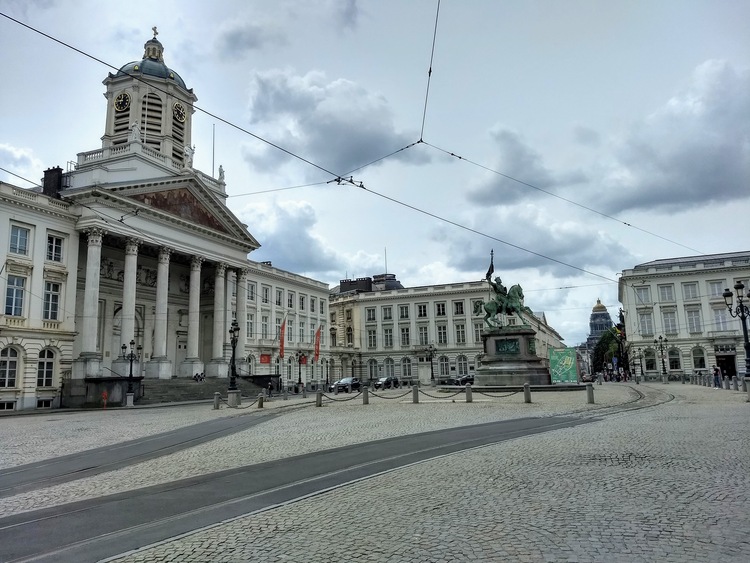
Royal Square
Even though the name of this square is the Royal Square, we won’t get to see the current Royal Palace until later on this tour. However, this location was thé center of power since the very early days of Brussels. The aristocratic leaders of the larger area to which Brussels belonged (the Duchy of Brabant in the Middle Ages, but later on the Bourgondian Netherlands, the Spanish Netherlands, the Austrian Netherlands,) lived here on the Coudenberg hill. The Coudenberg Palace was the Versailles of Brussels, immense, exuberantly wealthy with decoration, art and books and in the 16th century it was the political center of the world. The most powerful emperor of Europe and even the world lived in this palace at the time: Emperor Charles V (of the Habsburg dynasty), the first one who could claim he had an empire where the sun never set. He ruled half of the European continent but as the King of Spain in the 16th century also all of its overseas colonies. He even had some dominions in Asia.
I’m sure you guessed it by now, what you see today is not this Versailles of Brussels, it burned down in the 18th century and was replaced by this Royal Square in Classical style. However, You can actually visit part of this palace underground, the cellars and archeological remains are still there, you can enter the Coudenberg archeological site through the BELvue museum (next to the Royal Palace).
As you go through Regency Street (Rue de la Régence) to the next stop, you’ll walk past the Royal Museum of Fine Arts on your right-hand. If you love fine arts and have a free 2-3 hours, or if it’s raining, this is the museum that you should visit, with its Rubens, Brueghel and many more of the greatest Belgian artists (even though Belgians didn’t exist at the time). For an extra fee, you can also visit the Magritte museum, without a doubt the greatest 20th century Belgian artist. If the name doesn’t ring a bell, I’m sure you recognize his surrealist work with the typical top hat, pipe or apple.
-
INTRODUCCIÓN
-
EXPOSICIÓN DE LA GRANJA QUEBEC DE FREDERICK Y ALICE REINHARDT
-
FLUYENDO A TRAVÉS DEL TIEMPO
-
LA IGLESIA
-
LA TRANSICIÓN
-
EXPOSICIÓN: LA SALA DEL MOLINO
-
EXPOSICIÓN DEL NAVIGANT: EL TESORO DE LA VIDA
-
LA ESCALERA
-
EXPOSICIÓN DE BÉISBOL
-
VIVIENDA DE TRES NIVELES
-
MOLINOS A LO LARGO DEL BLACKSTONE
-
EXPOSICIÓN: EL AULA PARROQUIAL- (c.1929)
-
INDUSTRIALES DE WOONSOCKET
-
SALÓN DE LA UIT
-
EXPOSICIÓN DE VETERANOS “LT. GEORGES DUBOIS”